LAWN PHIX PRO TIPS
Having done several bentgrass renovations, I found the best method to kill creeping bentgrass is blanket spraying 2-3 applications of Tenacity (mesotrione) with a non-ionic surfactant – the first app also containing Triclopyr – every two weeks in the late summer. Blanket spraying will target non-visible bentgrass and weeds while preserving good grass.
- Begin the first herbicide application at least 30 days before your seeding date.
- Mow the grass low – preferably scalped – and remove as much dead bentgrass as possible.
- Core aerate or use a power rake or slide seeder before overseeding.
- Apply heavy rates of grass seed on the bare spots.
- Use a starter fertilizer, lime, and liquid nutrition.
- Continue to spot-spray bentgrass the following spring.
Creeping bentgrass is a perennial cool-season grass. While it’s a popular choice for golf courses, putting greens, tee boxes, and sometimes fairways, it’s less than desirable in your home lawn.
It spreads quickly, and it can withstand a lot of heavy foot traffic. It prefers to be mowed very short, and it laughs in your face when you spray it with many of the selective herbicides that you would normally spray on your lawn to kill crabgrass, nutsedge, and other weeds.
Creeping bentgrass control is a bit of a challenge, but with the right information — which you’ll find here — you can get rid of it and enjoy a weed-free lawn.
Table of Contents
How to Identify Creeping Bentgrass
This antagonizing grass is a lighter shade of green than most popular lawn varieties — it’s almost a lime-green, like Poa triv and Poa annua — so it’s not too hard to miss it once patches take hold in your bright green yard. The blades are more finely textured than those of desired grasses like turf type tall fescue or Kentucky bluegrass.
In mid-summer, when the temperature rises, identification will become much easier — it’ll start to die off, and you’ll end up with brown patches in your lawn.
How Creeping Bentgrass Spreads
This hardy weed (to us) has a shallow root system with stolons, or above-ground runners, that spread horizontally across the top of the soil and shoot grass blades upwards into your darker lawn grass. This enables it to form dense stands and give it a competitive edge over desirable grasses — and even other weeds.
While its root system is much shallower than those of your run-of-the-mill cool-season perennial grass, its roots and stolons spread well beyond what you can see — another reason why creeping bentgrass control can be tough.
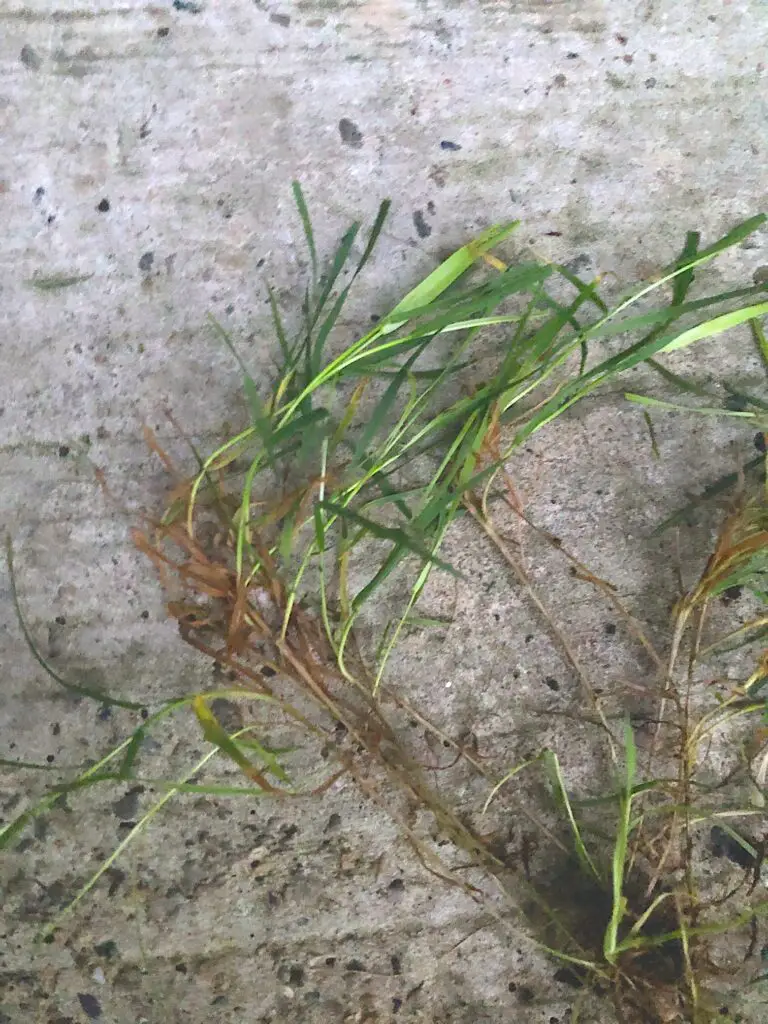
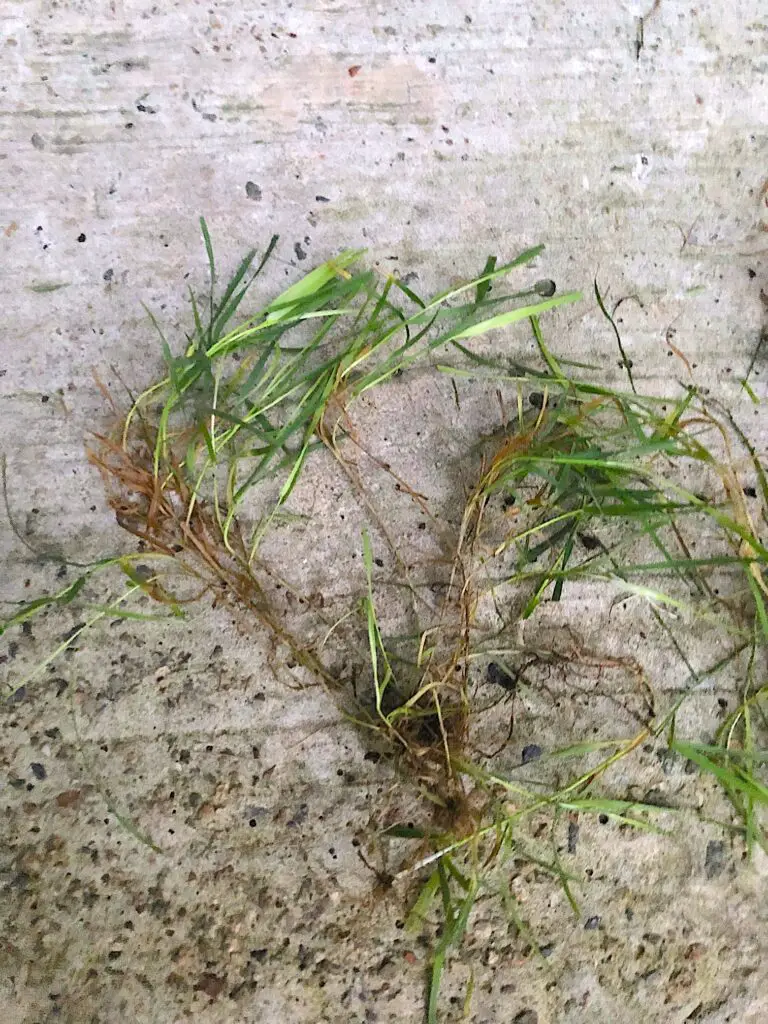
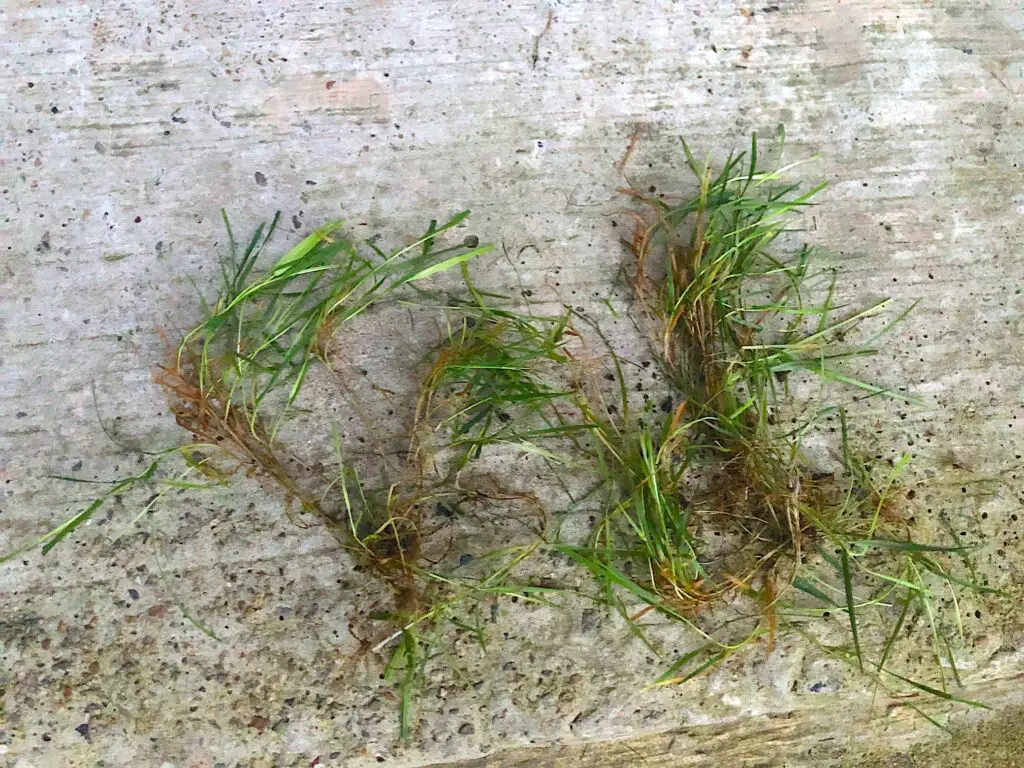
How Do You End Up With Creeping Bentgrass in Your Lawn?
Creeping bentgrass seeds find their way to your lawn in a few ways. They can blow into your yard, or your neighbor’s lawn mower might shoot them over the hedge. The seeds get pooped onto your grass by birds, and they’re often unwittingly mixed into cool season grass seed mixes, since they’re very small and can slip through the screens — and past quality control. Many older lawns were purposely seeded with it, and once you’ve got it, getting rid of creeping bentgrass is a birch.
Seeds may be lurk in your soil without your knowing it, and they may propagate at some point after core aeration.
How to Get Rid of Creeping Bentgrass with Chemicals
There are a couple of herbicides that’ll kill creeping bentgrass in your lawn. Whichever chemical you use, you may need multiple applications, and you’ll want to spray at least six inches beyond the visible patch since the stolons spread quickly and may not have had a chance to sprout blades of grass.
Use Tenacity Herbicide
One of the best ways to get rid of bentgrass and other weeds while preserving the rest of your lawn is with Tenacity herbicide. A pre-emergent product, this selective herbicide uses an active ingredient called mesotrione, which prevents photosynthesis in the plant and disrupts chlorophyll. Some say it’s like a person using sunblock.
Spray two applications of Tenacity – two weeks apart – with a non-ionic surfactant (NIS). The first application should include Triclopyr, as it is safe to seed 30 days after application. The second app should be Tenacity and NIS only (no Triclopyr).
- 1/2 teaspoon of Tenacity per 1,000 sq. ft.
- 1.45 oz. Triclopyr
- 1 1/2 teaspoons of NIS per 1,000 sq. ft.
I used this method with great results back in 2019 – check out my full Tenacity Herbicide review here. After several days, the bentgrass will begin to turn white, and soon after the second app, the grass will turn brown and eventually die. Scalp the grass with your lawnmower, use a dethatch rake or Sunjoe to remove the excess grass (hay), and spot or overseed the bare areas.
2023 Bentgrass Renovation Timeline
Below are some images of my most recent bentgrass renovation in the fall of 2023.
August 18, 2023

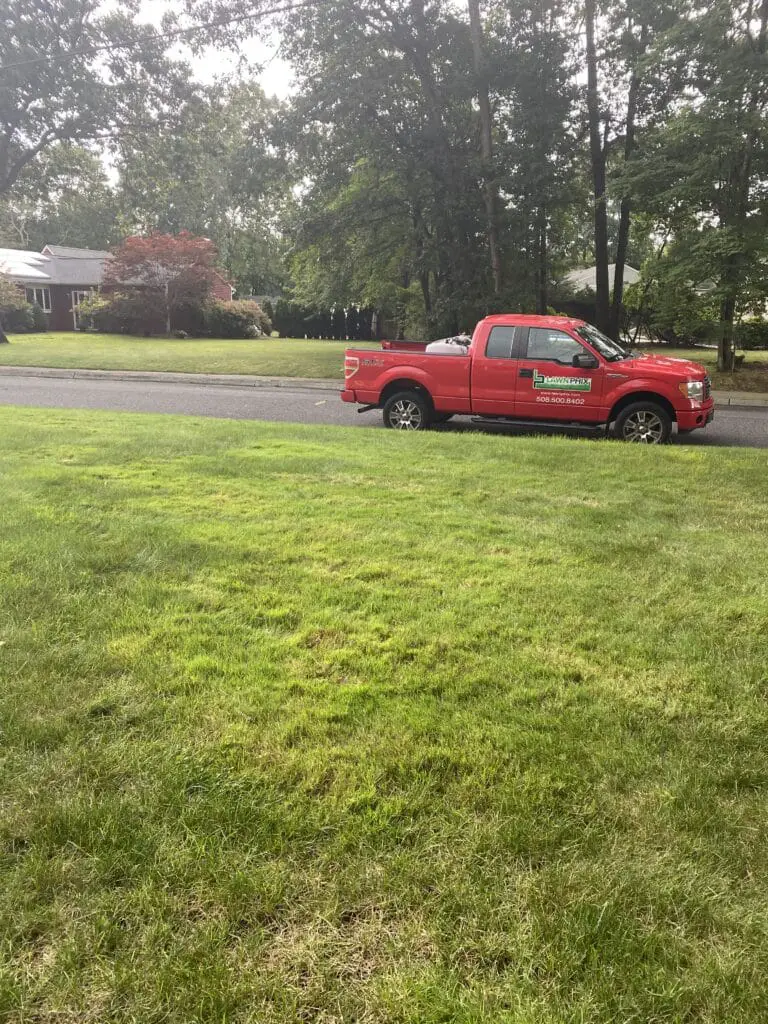

Chemicals used: Torocity (Mesotrione), Triclopyr, and Induce pH (surfactant).
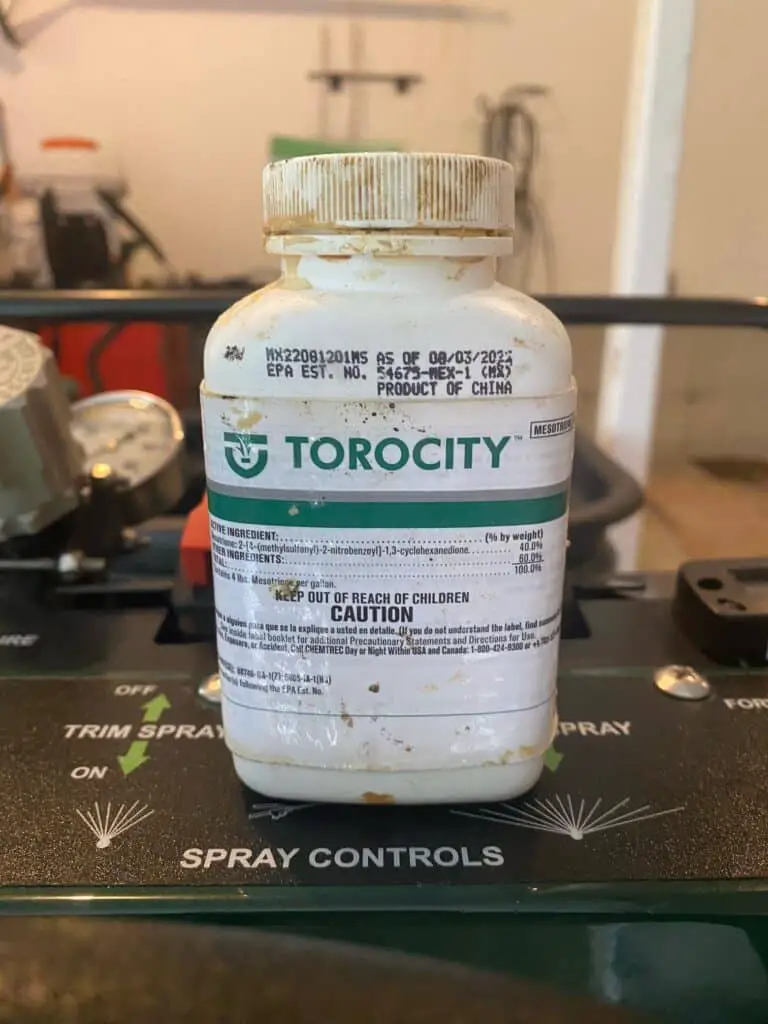
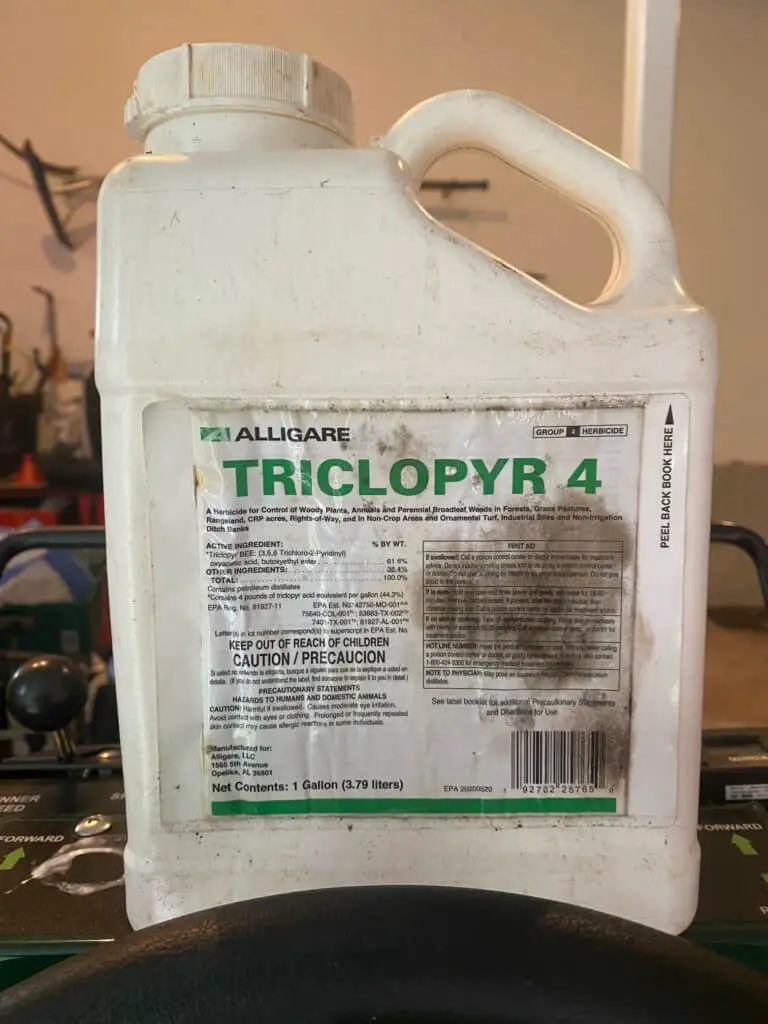
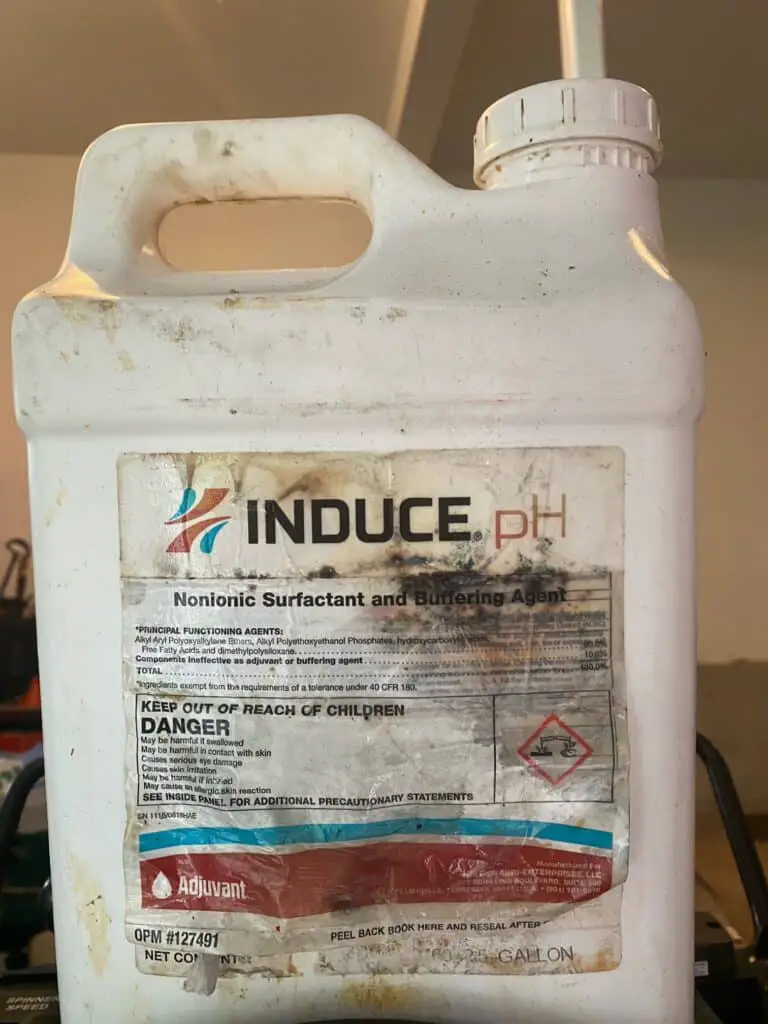
September 9, 2023
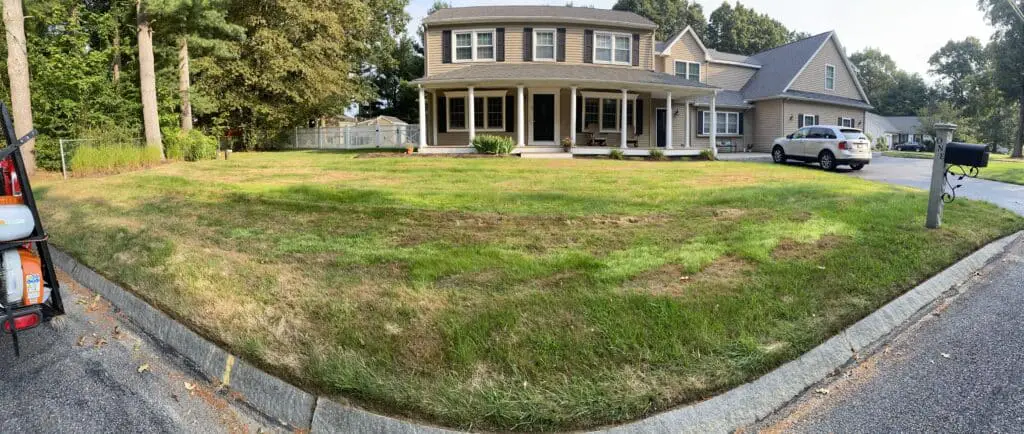
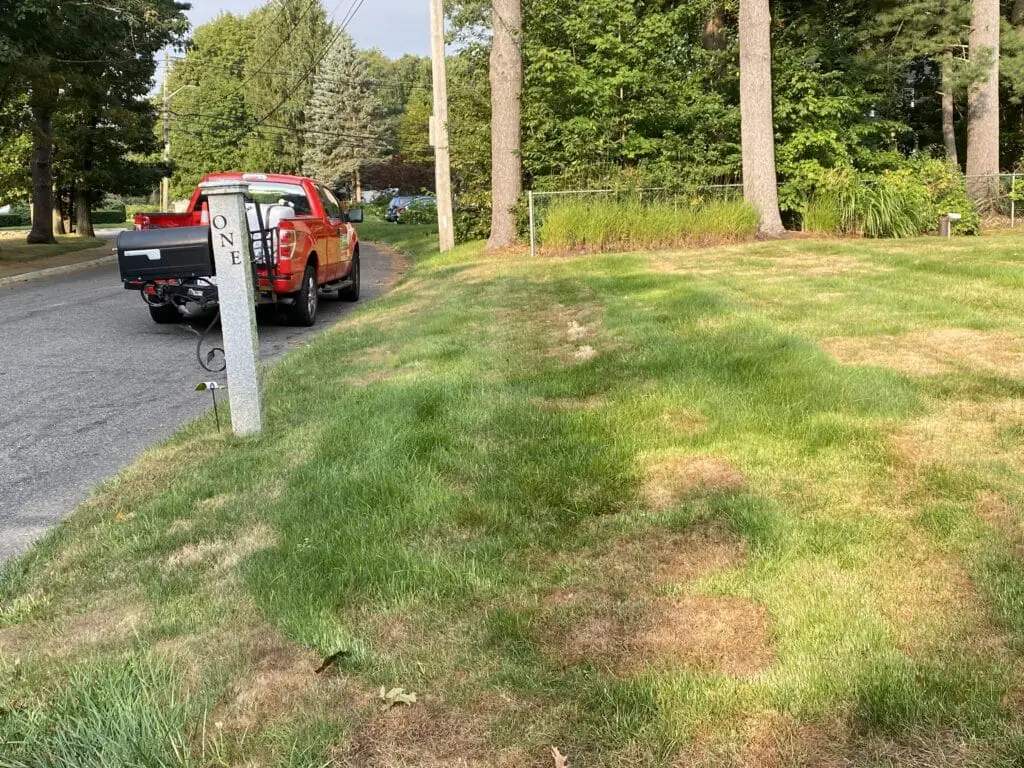

September 23, 2023
I used my Flowzone Typhoon backpack sprayer to spray this property three times. The day of aeration and overseeding I used a Toro Timemaster to scalp and back the dead creeping bentgrass.

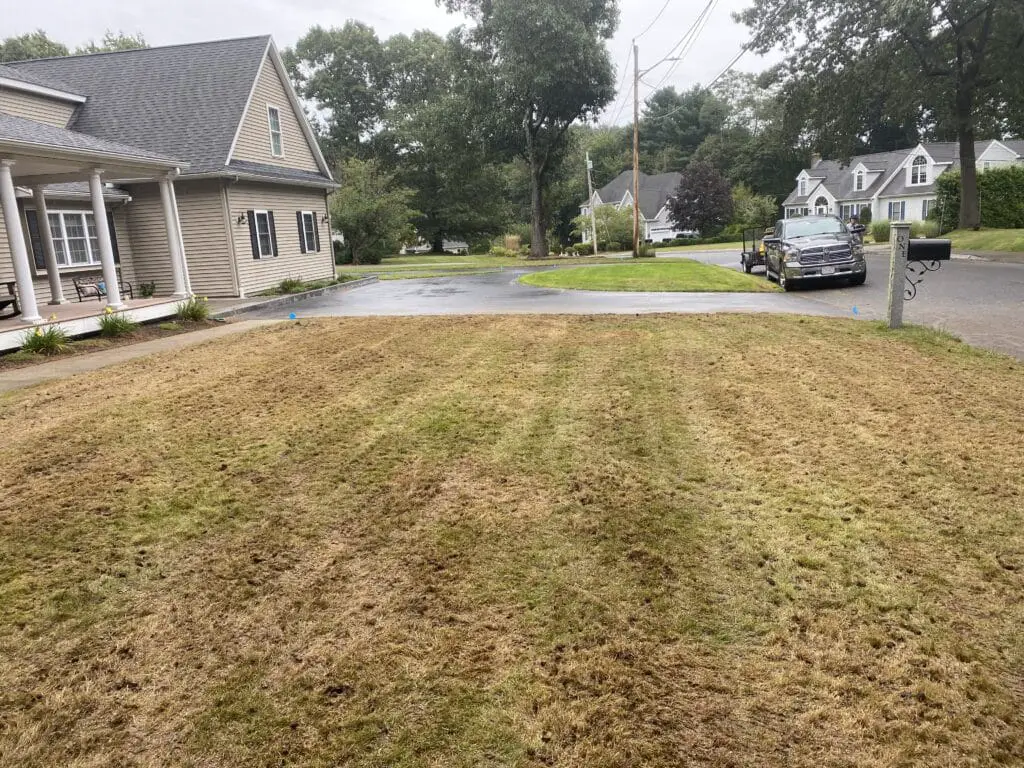

Try a Non-Selective Herbicide
Another way to remove creeping bentgrass is to use a non-selective herbicide like Round Up — containing glyphosate — or Avenger (organic). Spraying with these chemicals (follow the label directions!) will kill the bentgrass, but since they’re non-selective, they’ll also burn to a crisp every other plant they touche – including your desirable grasses. Once the grass has turned brown, scalp, rake, and overseed the treated area, same as with the aforementioned Tenacity.
How to remove creeping bentgrass manually
While digging out creeping bentgrass is generally less effective than using herbicides, it’s possible to remove it by hand. Since its roots and stolons form a thick, matted base beneath the blades, it’ll lift up almost like a carpet. Dig around the patches and pull up the grass in swaths.
When you’ve removed the grass you can see, run your fingers along the soil outward from the patch where it was growing. If they hook onto stolons, get a good grip, slowly pull on the stolon, and follow the stem until it terminates. Re-seed the spot with your choice of premium grass seed to fill in and match your existing lawn.
Any roots and rhizomes left behind in the soil will eventually come back and spread, so an important aspect of future control of creeping bentgrass is maintenance.
What’s the Best Time to Treat Creeping Bentgrass?
The best time to treat bentgrass with an herbicide is mid to late summer when it’s actively growing. Don’t apply it during a drought or when the heat is beginning to turn the grass brown.
The best time to treat it with preventive measures is… always. Successful creeping bentgrass control depends on continually monitoring your lawn and actively removing it at first sight. Follow-up applications of mesotrione in the early to mid-spring will help this alpha “Bermuda of the north” grass in check.
Cultural Practices to Control or Prevent Creeping Bentgrass
Here are a few things you can do to make sure creeping bentgrass doesn’t thrive in your home lawn:
Water smart
Water your lawn deeply but infrequently. Since creeping bentgrass isn’t drought-tolerant, watering less often will send it into a stressed state and begin to die off. When it does, scalp, rake, and overseed.
Mow high
Actively growing creeping bentgrass does best when it’s mowed to a height of about 1 inch — which is why it’s great for golf course greens. So, the higher you keep your mower blade, the worse off the weed will be. Mow your lawn to the highest recommended height for your grass species to keep it healthy and help crowd out this and other grasses and weeds you don’t want around.
Fertilize properly
If you’ve fertilized heavily to keep your lawn healthy, you’ve also promoted the growth of creeping bentgrass. Fertilize your lawn with a light touch, and you’ll deprive the beast of the levels of nutrients it needs to thrive.
I hope this helps with the identification of bentgrass and the steps to rid your lawn of this abomination, this obnoxious weed. Got questions? Please leave them in the comments below – I’ve done this a few times now and would love to help!

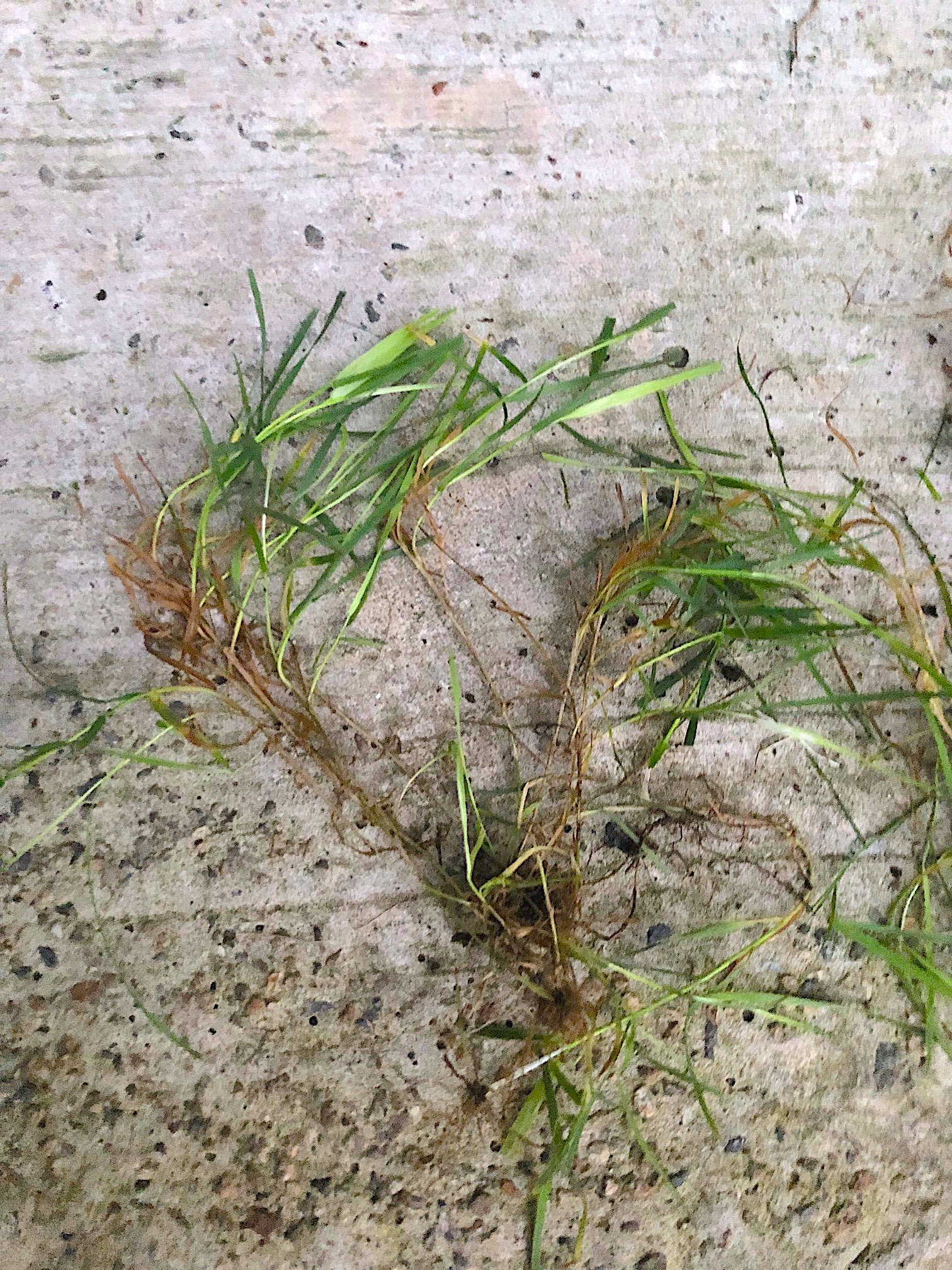
Hi. The lawn looks great! I am not sure if I have bentgrass or fine fescue. I need to take a sample in to our extension or IFA store to be sure. It seemed to take over a large 10×20 foot area in my Kentuchy Blue really fast this summer! And I keep a pretty good eye on things since I have been battling necrotic ring for several years now (it’s working its way through the whole city, it seems. ) This gives me some hope! Job well done!
Thank you for this article… I will be trying this fall and spring to get our overrun yard in control. When would you recommend aerating the yard in the midst of all this… I am assuming spring after thatching the bentgrass out and before seeding?
Hi Tracy. I’d recommend killing it off now and shoot for fall seeding. You’ll have much better luck. And you can definitely aerate:
-Kill off Bentgrass
-Mow low
-Dethatch
-Aerate
-Overseed
Is there a pre-emergent for bent grass that I can apply in the fall that will keep the Bent grass from germinating and spreading? I have used Tenacity as a post emergent, but I am seeing a few places with bent grass and would like to limit its spread until early summer when I will apply post emergent again.
hi Jeff. I would use prodiamine (like Barricade). The efficacy at max rates will last the longest and is worth a shot.
I bought a house recently that has a “very good” creeping bent lawn. I am trying to eradicate crab grass and clover and unfortunately used Tenacity (spotingly) and I’m sure you know what happened. What selective herbicide can I use for crab grass and clover in my creeping bent lawn without damaging it?
Did you treat again after bent grass is gone for prevention? Where are you located? I live by a golf course in Indiana. I think it’s continuing to flow over from the golf course. I’ve battled for three years. It’s expensive and I’m VERY frustrated
Hi Pam. We’re located in Massachusetts. After two apps (the first application of Mesotrione, Triclopyr, and NIS, and second app Meso + NIS) this did the trick. However, if you find that the same spots come back the following year, I’d recommend 1-2 apps of glyphosate.
Looking for information how to rid my lawn of bent grass. Getting more and more of it.
Hi Rose. Let me know if if you have any specific questions.